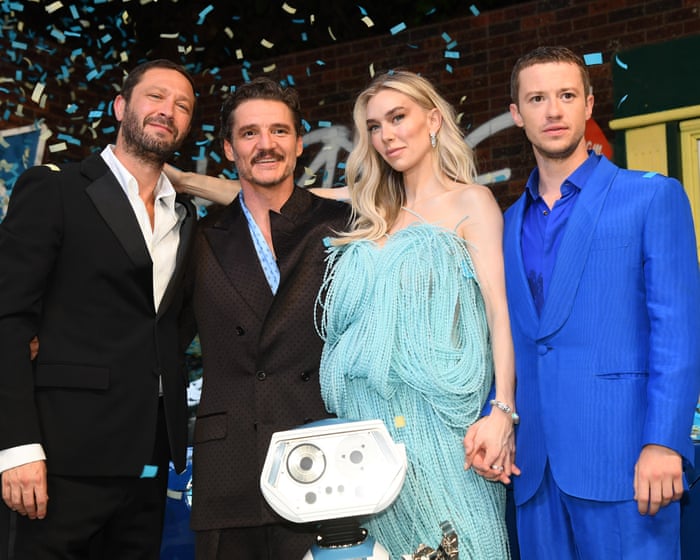It seems the saying might be true—superheroes don’t face the same life-or-death stakes as real life. The past few years have been rough for the once-dominant American superhero movie, with only two making the list of 2024’s top-grossing films in the U.S., and three in 2023. (Compare that to 2022, which had as many hits as both years combined, or 2021, where the top four were all superhero-led.) The bigger issue isn’t just the lack of hits—Deadpool & Wolverine did well enough to justify more team-ups—but the growing number of flops. Sequels like Joker and Aquaman underperformed compared to their predecessors, while would-be franchise starters like The Flash, Madame Web, and Kraven the Hunter failed to catch on. Even The Marvels, a Marvel movie in name and nature, fell short.
2025 seemed to follow the same trend, with Marvel’s Captain America: Brave New World and Thunderbolts both struggling at the box office. Even reviews, which often give MCU films an easy pass, didn’t help much: Thunderbolts got better notices and a prime summer release date, yet still earned slightly less than the poorly received Captain America sequel.
But this July, things turned around—starting in the sky. DC launched its new cinematic universe with a Superman movie, just as it did in 2013 with Man of Steel. This time, though, audiences and critics actually liked it, with the film soaring past $500 million worldwide in under 20 days. Meanwhile, Marvel’s The Fantastic Four: First Steps, another reboot of a historically troubled franchise, is performing just as well, likely to surpass both Captain America and Thunderbolts soon.
So what did these two superhero brands get right? “Make good movies” is the obvious answer, but not a very useful one—after all, Thunderbolts had decent reviews and audience reception too. The real common thread? Both Superman and Fantastic Four draw inspiration from the Silver Age of comics (1956–1970), an era known for its colorful heroes, bizarre villains, and genre-blending sci-fi. Marvel’s most beloved characters, including the Fantastic Four (debuted in 1961), emerged during this time, as did stories where Superman casually teamed up with other heroes or battled giant monsters.
General audiences might not recognize the term “Silver Age” (or even know that the Silver Surfer is a CGI character played by Julia Garner in the new Fantastic Four), but they can still feel its influence. For one, these movies skip lengthy origin stories, trusting that newcomers don’t need exhaustive explanations. Superman and Fantastic Four mention their heroes’ beginnings in passing but focus on the adventure, assuming—correctly—that audiences can accept a world with robots, flying cars, and superpowered pets without needing a full orientation. Much like Silver Age comics, which rarely demanded readers catch up on 20 issues before jumping into a new story, these films make it easy to dive right in.
(Image: David Corenswet as Superman. © 2025 Warner Bros. Entertainment. All Rights Reserved. TM & © DC)The word “kid” is key here. Both Superman and Fantastic Four look like bright, fast-paced adventures with strong appeal for children—and for the most part, they are, aside from some mild peril and one intense moment. That kid-friendly approach isn’t always enough on its own (nobody seemed to notice or care that The Marvels was actually a solid kids’ movie), but Fantastic Four and especially Superman seem to embrace a twist on film critic Pauline Kael’s old saying: if movies are rarely great art, you should at least appreciate great trash. Similarly, since superhero films so rarely offer depth and nuance for adults, they ought to at least be genuinely fun for kids. Can you imagine a child sitting through Captain America: Brave New World?
This ties into the standalone nature of Superman and Fantastic Four. An 11-year-old in 2025 isn’t likely to show up at the theater having studied a full syllabus of lore. Thunderbolts, while decent, is partly a sequel to Black Widow and features characters whose backstories span two TV shows and an Ant-Man sequel. You can follow it without seeing all that, but does it really make sense without any prior knowledge? Fantastic Four does—at least until a mid-credits teaser that won’t mean much unless you’re familiar with comics or industry rumors.
In those few minutes, Fantastic Four also hints at how easily Marvel and DC could forget these lessons. Marvel isn’t exactly lining up a fresh slate of standalone adventures. Quite the opposite: their next film, due in a year, is Spider-Man 4 with Tom Holland. To be clear, nobody’s worried about its success—Spider-Man and Batman are practically immune to superhero fatigue. But while Sony keeps pumping out Spidey movies at a steady pace, Disney-owned Marvel is chasing something bigger than just mixing new heroes, sequels, and occasional team-ups. They want another Avengers: Endgame.
The so-called superhero fatigue of recent years is partly a result of the MCU’s own success. After building toward Endgame in 2019, Marvel has struggled to convince fans that something equally huge is coming, rather than resetting expectations away from massive crossovers every few years. Recent solo films like Doctor Strange, Black Panther, Spider-Man, and Thor were all hits, as was Shang-Chi’s introduction. Yet only Spider-Man has a confirmed sequel on the way—the rest are casualties of Marvel’s confusing strategy to skip straightforward sequels in favor of scattering characters across multiple projects before reuniting them for Avengers: Doomsday and Avengers: Secret Wars in 2026 and 2027.
People will obviously see these movies, especially with Robert Downey Jr. returning as Doctor Doom. But in their relentless quest for Endgame 2.0, Marvel might be painting themselves into another corner. Fantastic Four invites audiences into its retro-futuristic 1960s world with no homework required. Doomsday and Secret Wars promise a big event, a possible reboot, and then… what? A return to fun superhero movies years later, once the dust settles?
Meanwhile, DC is reviving Superman’s supporting cast for Peacemaker Season 2—which, in a hilarious twist, follows a first season that belonged to a completely different DC universe (the one with Aquaman and Wonder Woman). Their next film is Supergirl, featuring Superman’s cousin, who gets a brief cameo in the current movie. Set for June 2026, it’s based on the comic Supergirl: Woman of Tomorrow.This series should theoretically stand on its own—it’s more of a riff on True Grit (both the book and film) than anything from DC lore. (Superman doesn’t appear in the comics, though that might change for the movie.) The fact that the Supergirl film is reportedly a direct adaptation is the most promising thing about it. Not because audiences are clamoring for faithful comic book adaptations—many haven’t read them, and some stories are tricky to translate to screen—but because superhero movies lately take more inspiration from each other than from the varied, stylistically rich comics that birthed them. Origin stories may feel outdated, but revisiting the vast history of comics could breathe new life into the genre.




